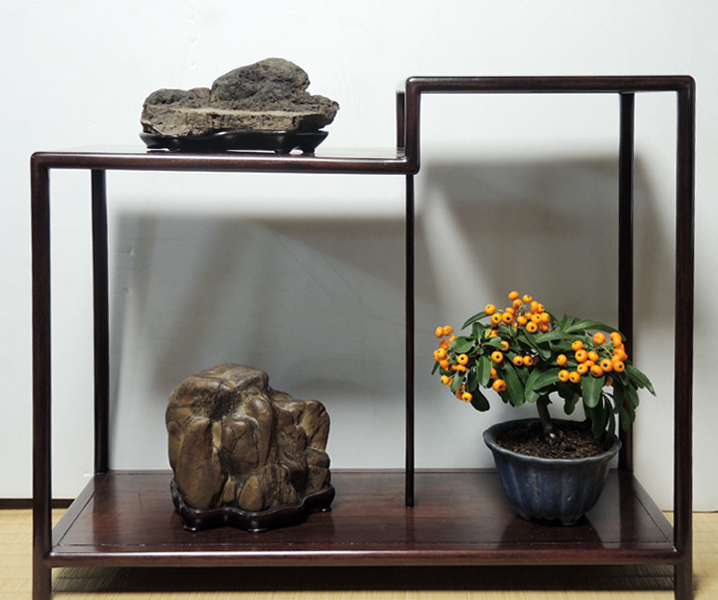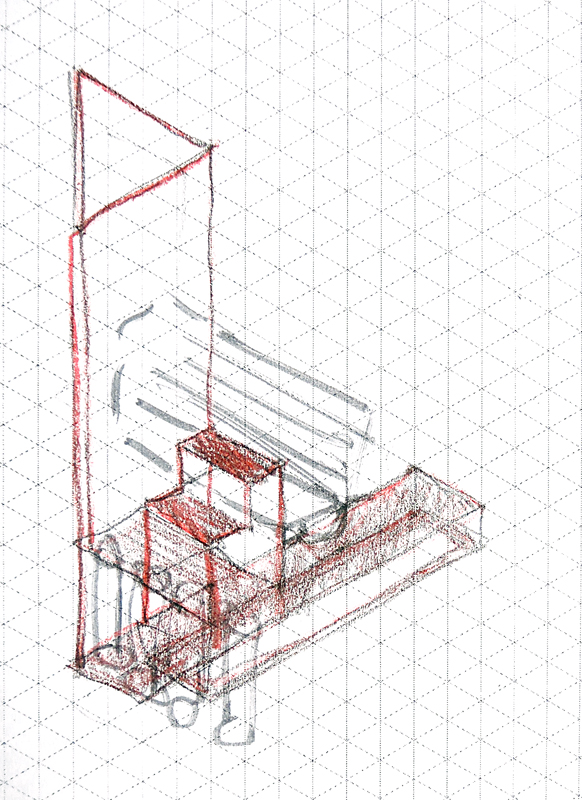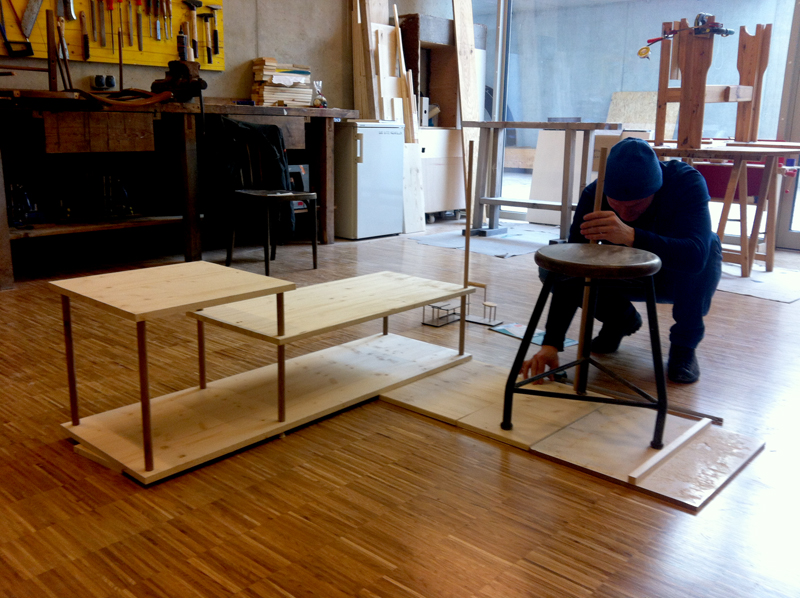
ASSEMBLAGE BOARDS
As a performative installation, the Assemblage Boards serve as an exploring tool and are an attempt to combine and continue the complex strands of cosmological models and composition systems in the form of an installation and an artistic structure. It, too, can be interpreted as a kind of garden that functions as a composition and that allows parts of its composition to work configuratively – the single elements mirror the onlooker’s efforts to grasp the circumstances.
The elements on the boards connect several aspects: we address questions of gaining knowledge, of experience and composition, of grouping, dismantling, expanding, or dissolving.

Shohin shelf at SUISEKI-EN Collection of Mr. Manabu Kasahara's, Tokyo, November 2016
Japanese Shohin Shelves – Tana-kazari
The structure of the boards derives from the Japanese Shohin shelf "Tana-kazari" – a display architecture for Bonsai or Suiseki, small trees or stones, respectively. Their minimalist, almost modernist, asymmetrical and elegant structure is hosting, framing and comprising the seasonal condensate of the entire environment, a stone, a plant or a scroll painting.
Here, on a larger scale, it becomes a viewers’ shelf; a device in relation to which the onlookers can take different positions and view it from different angles, sitting or leaning over and thus becoming exhibits themselves, like subjects in the display. The categories of object and subject start to shift. Familiar patterns of thinking are interlaced with the choice of materials – a paradox between what is asserted on the one hand, and expectations and assessments that cannot be dissolved on the other. This opens a vista that reflects the viewer’s view.

Development of the Assemblage Boards
The eight Assemblage Boards were created by Almut Rink according to fit in eight respective locations of Zenpukuji Park, Tokyo. The development of their appearance and planning was accompanied and assisted by Burak Genc, student of architecture.
Realized in close cooperation with artist and builder Gerald Freimuth, the boards were materialized as acessible graphics, built at the edge of their capacity. The choice of material, solid oak wood, enabled the team to build them as thin as necessary to still be able to sit on for a human. Later it turned out that oak wood is applied to be a wood of national importance in Great Britain, as well as in Austria as well as in Japan.
Eight Unfolding Stories
Orientation as Gardening will be realized in three different locations (Zempukuji Park Tokyo and Youkobo Art Space; vicinity of Kings Cross and Crossing of at the Central Saint Martin’s College of Art, London; Academy of Fine Arts Vienna) and thus adjusted to their respective circumstances.
Adapted to the three different venues in Tokyo, London and Vienna the boards start to unfold their stories, moving, changing the media or surface, start to lay down or fall apart, being held, watched, imagined and played on.
Zempukuji Park, Youkobo Art Space
3rd – 23th November 2016
Crossing at the CSM University of the Arts and vicinity of King's Cross
28th February – 9th March 2017
Korea Kulturhaus, Donaupark and Irissee, Vienna
7th – 21st of September 2017

Assemblage Board_Prototype, Model, Gerald Freimuth adjusting, 2016